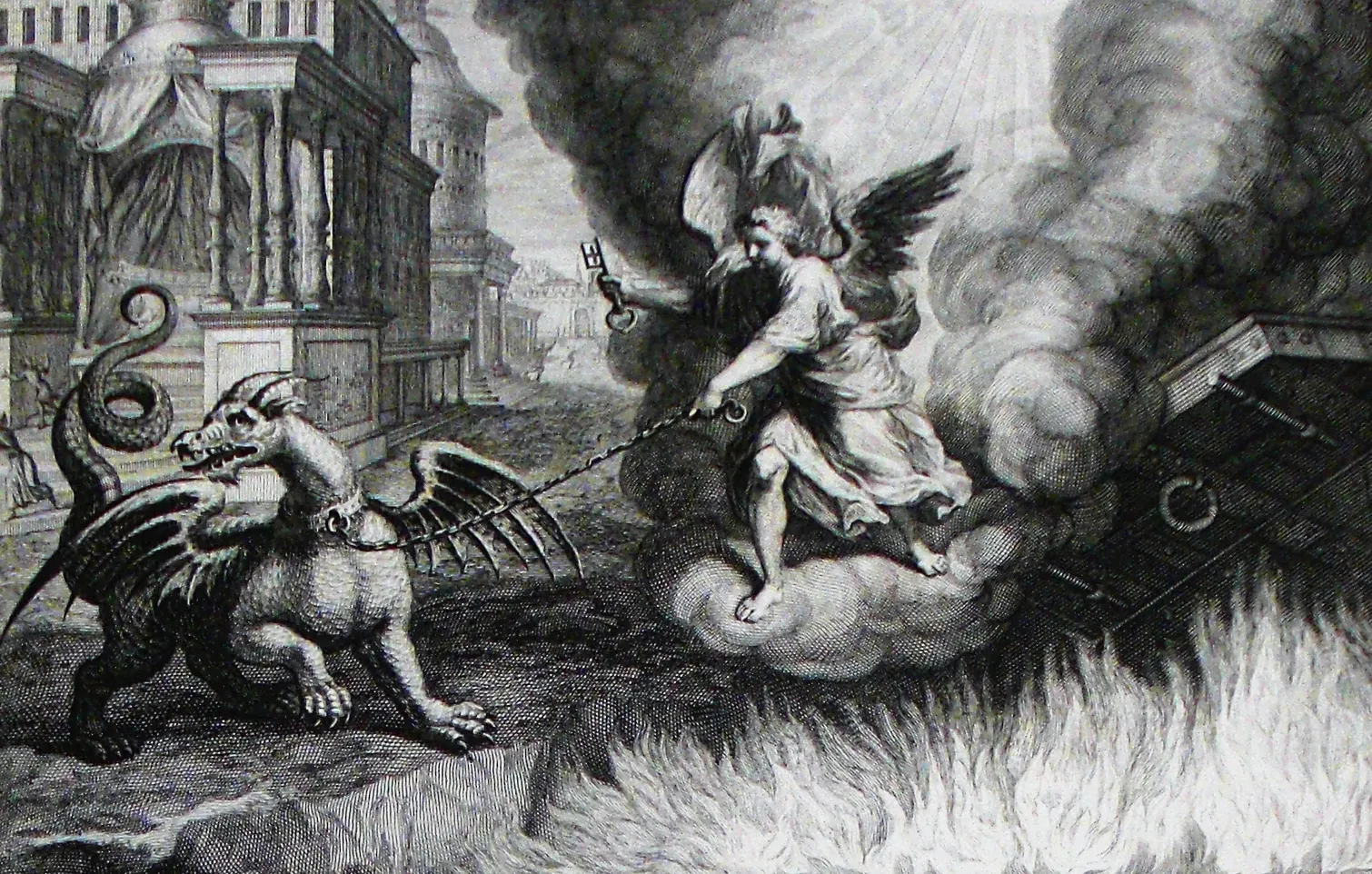The book of Revelation is full of symbolism and prophetic warnings about the end times. One of its most intriguing passages is about the Seven Seals. In this post, we’ll take an in-depth look at what these seals represent and how they provide insight on the eschatological events to come. Join us as we unveil the mystery of the Seven Seals.
Background Information on the Book of Revelation
The Book of Revelation is the final book of the New Testament. Also called John’s Apocalypse, it is widely believed to have been written by the apostle John during the reign of Emperor Domitian in the late first century. The book is considered to be apocalyptic literature, which means it uses symbolic language to describe end times prophecy.

Revelation is a complex book that has been subject to intense biblical interpretation and study throughout the centuries. The book is addressed to the seven churches in Asia Minor and contains letters to each church that are meant to encourage and challenge them in their faith.
The book is divided into three main sections: the visions of John, the seven churches, and the final triumph of God. The visions of John describe events that will precede and occur during the second coming of Christ, including cosmic upheaval, judgments, and spiritual warfare. The seven churches mentioned are representative of the larger church and serve as models of how to live faithfully in the midst of persecution. The final triumph of God is the culmination of God’s plan of redemption and the establishment of the new heavens and earth.

Understanding the Book of Revelation requires a basic understanding of both the Old and New Testaments, as well as the political and cultural context in which it was written. Many of the symbols and motifs used in Revelation are drawn from the prophetic visions of Daniel in the Old Testament.
In summary, the Book of Revelation is a challenging and complex work of apocalyptic literature that portrays the ultimate triumph of God over the forces of evil. It is filled with rich symbolism and imagery that requires careful study and interpretation. Nonetheless, through prayer and the guidance of the Holy Spirit, Christians can glean valuable lessons from this book and apply its teachings to their lives.
Useful Sources:
- https://www.britannica.com/topic/The-Book-of-Revelation
- https://www.biblestudytools.com/revelation/
- https://www.gotquestions.org/Book-of-Revelation.html
The Seven Churches and their Meanings
In the Book of Revelation, the Apostle John records a series of visions and messages from Jesus Christ that unveil the end times prophecy. The first section of the book is dedicated to the seven churches of Asia, which were located in present-day Turkey. Each church receives a specific message that addresses their strengths, weaknesses, and warnings for repentance.
The churches are believed to represent any church throughout history, as well as seven stages of spiritual development that Christians might experience. The first church, Ephesus, was commended for their hard work but warned that they had abandoned their first love. Smyrna was a church that was suffering persecution, but they were told that they would receive a crown of life if they remained faithful. Pergamum was criticized for tolerating false teaching, while Thyatira was praised for their love, faith, service, and perseverance, but condemned for allowing a false prophetess to mislead the church. Sardis was a church that had a reputation for being alive, but Jesus warned them that they were actually dead. Philadelphia was encouraged for their faithfulness, and Laodicea was rebuked for their lukewarmness.
The symbolism used in these messages is profound and reveals the complexities of human nature. Its proximity to John’s apocalypse demonstrates the importance of spiritual warfare and how it is linked to the second coming of Christ. The seven churches in Revelation represent the spiritual battles that continue in every Christian’s life. These battles include struggles with materialism, doubts about faith, and the question of their eternal future.
The messages to the seven churches also warn that Judgment Day is imminent and that every Christian must take their spiritual life seriously if they hope to enter Heaven. The messages are relevant because they teach Christians to remain faithful to God and to stand firm in the face of adversity. Moreover, the messages teach Christians that God is loving yet just and that we must give an account of the deeds done in the flesh.
In conclusion, the seven churches in Revelation exemplify the complexity of spiritual warfare. Although the messages were given to specific churches at a specific time, they are applicable today. They teach us to remain faithful to God even when we face persecution, to stand firm in the face of temptation, and to avoid false teaching. Through this section, we learn that the ultimate goal is to remain faithful to God so that we may enjoy eternal life with Him.
The Four Horsemen of the Apocalypse
In the book of Revelation, the Four Horsemen of the Apocalypse are introduced in chapter six as the first four seals are opened. These horsemen represent different themes that will play out during the end times, ultimately leading up to the second coming of Jesus Christ. The four horsemen bring messages of conquest, war, famine, and death. Let’s take a closer look at each of the horsemen and what they symbolize.
The White Horse: Conquest
The first horseman is depicted riding a white horse, symbolizing conquest or victory. Some interpretations suggest that this represents the Antichrist or false messiah who will bring political and military domination to the world. Others believe it to be the beginning of a time when the gospel of Jesus Christ begins to bear fruit among the nations.The Red Horse: War
The second horseman rides a red horse, signifying war and bloodshed. War has always been present in the world since the beginning, but during the end times, it will only get worse as men will start to hate and destroy each other more.The Black Horse: Famine
The third horseman rides a black horse which represents famine and shortage. With war comes scarcity of resources, and food will become scarce. People will fight over supplies, and it may lead to devastating consequences that extend beyond the physical world.The Pale Horse: Death
The fourth horseman of the apocalypse rides a pale horse, and his name is Death. This horseman’s arrival signifies the end of things, the end of life. With death, there is always an air of mystery and fear. But the Christian believes in eternal life through Jesus Christ and so does not fear death.

It is essential to note that there are different interpretations of the symbolism behind the four horsemen. However, what is common among them all is the literary symbol used to represent the apocalyptic events that will occur in the end times. The language in Revelation is rich in symbolism, and it is usually interpreted by biblical scholars based on the foundation of other prophetic books like Daniel’s visions. Feel free to explore and discover what the Word of God says to your heart.
The First Four Seals and their Interpretations
Now that we’ve covered the background information and the Four Horsemen of the Apocalypse, it’s time to dive into the first four seals of the book of Revelation.
The first seal is represented by a white horse and its rider has a bow and a crown. This is commonly interpreted as the Antichrist who will come as a conquering leader for the end times. However, some argue that this could also be representative of Jesus as a victory symbol.
The second seal is represented by a red horse and its rider has a sword. This signifies war and chaos. The blood-red color of the horse could represent the bloodshed that comes with war. This seals marks the beginning of the tribulation and the rise of violence and conflict throughout the world.
The third seal is represented by a black horse and its rider holds a pair of scales. This symbolizes famine and economic collapse. The scales represent the scarcity of food and resources and the high prices that follow. This will be a difficult time for people to survive and will mark the struggle for basic human necessities.
The fourth seal is represented by a pale horse and the rider is Death, accompanied by Hades. This seal signifies death and destruction of a fourth of the earth’s population. The color of the horse could represent the corpse-like nature of death. This seal marks the beginning of the end times and the judgment that will take place on humanity.
It is important to note that there are various interpretations of these seals and their meaning in the book of Revelation. Regardless of their exact interpretation, the seals show us that there will be a time of turmoil, death, and judgment that will ultimately lead to the return of Jesus Christ.
In the next section, we will cover the fifth and sixth seals, representing further upheaval and the martyrdom of faithful believers.
The Fifth and Sixth Seals: Martyred Souls and Cosmic Upheaval
As we continue to delve deeper into the book of Revelation, we come across the fifth and sixth seals. These seals bring about intense emotions and imagery, with scenes of martyred souls and cosmic upheaval painted before our eyes.

The fifth seal is marked by the opening of a scroll, which reveals the souls of those who have been beheaded for their faith. These souls cry out for justice, asking when their deaths will be avenged. This is a powerful reminder of the sacrifices made by those who have gone before us, who have given their lives for the sake of their beliefs. It is a call to action for us to live boldly and fearlessly for the gospel, knowing that the ultimate victory is already won.
The sixth seal brings about a dramatic scene of cosmic upheaval. The sun turns black, the moon becomes blood-red, and the stars fall from the sky. Mountains and islands are shaken, and the kings of the earth hide in fear. This is a powerful depiction of the end times and the judgment that is to come. It is a reminder that we need to be ready for the return of Christ, and that we need to be actively sharing the gospel and living out our faith in every aspect of our lives.
As we reflect on these seals, it can be easy to get caught up in the symbolism and imagery. However, it is important to remember that these seals are not just symbols; they represent real-life events that will take place. They are a call to action for us to live boldly for Christ, to be willing to make sacrifices for the sake of the gospel, and to be ready for His return.
In summary, the fifth and sixth seals of Revelation bring about powerful imagery and emotions. They serve as a reminder of the sacrifices made by those who have gone before us, and of the judgment that is to come. As we continue to study the book of Revelation, let us keep these things in mind and be prepared to live boldly for Christ in the midst of a world that needs Him more than ever before.
- The fifth seal reveals the souls of those who have been beheaded for their faith, reminding us of the sacrifices made for the gospel.
- The sixth seal brings about cosmic upheaval, a reminder of the end times and the need to be ready for Christ’s return.
- These seals are a call to action for us to live boldly for Christ and be prepared to make sacrifices for our beliefs.
The Seventh Seal and the Silence in Heaven
As the Book of Revelation progresses, the seventh seal is introduced with great anticipation. The silence that follows is striking and unsettling, setting the stage for the cataclysmic events that are about to unfold.

Before discussing the silence, it’s important to know the purpose of the seven seals. In short, the seals represent God’s judgment of mankind, gradually unleashed in a series of events that culminate in the second coming of Christ. Each seal is opened by a horseman, one of the four horsemen of the apocalypse, and reveals a new layer of divine judgment.
When the seventh seal is opened, a profound silence falls over heaven. This silence is both eerie and significant, as it marks the anticipation of the final wave of judgments, culminating in the return of Christ. John, the writer of Revelation, describes it like this: “And when he had opened the seventh seal, there was silence in heaven about the space of half an hour” (Revelation 8:1, KJV).
The exact meaning of this silence is a matter of interpretation, with various scholars offering different explanations. However, one common theme that emerges is the sense of awe and reverence that this silence evokes. It’s a moment of tense anticipation, as the final judgments of God are about to be revealed.
Some also argue that the silence is a sign of God’s mourning for the loss of souls who have rejected him. Others suggest that the silence reflects the solemn nature of the judgments that are about to be unleashed upon the earth. Whatever the interpretation, it’s clear that the silence serves a powerful emotional purpose, setting the stage for the climactic events of Revelation.
In addition to the silence, the seventh seal also contains the seven trumpets, which herald the final judgments of God. These judgments are depicted with powerful imagery, including hail and fire, blood and darkness, and the unleashing of terrifying demonic creatures. While these images may be unsettling, they also serve as a reminder of God’s ultimate power and justice, as well as his ability to rescue and save those who turn to him in repentance.

Ultimately, the seventh seal and the events that follow serve as a potent symbol of the spiritual warfare that is at the heart of Christianity. As believers, we are called to stand firm in the face of these trials, trusting in God’s power and provision. With the help of his spirit and the support of the community of faith, we can face the end times with courage and hope.














